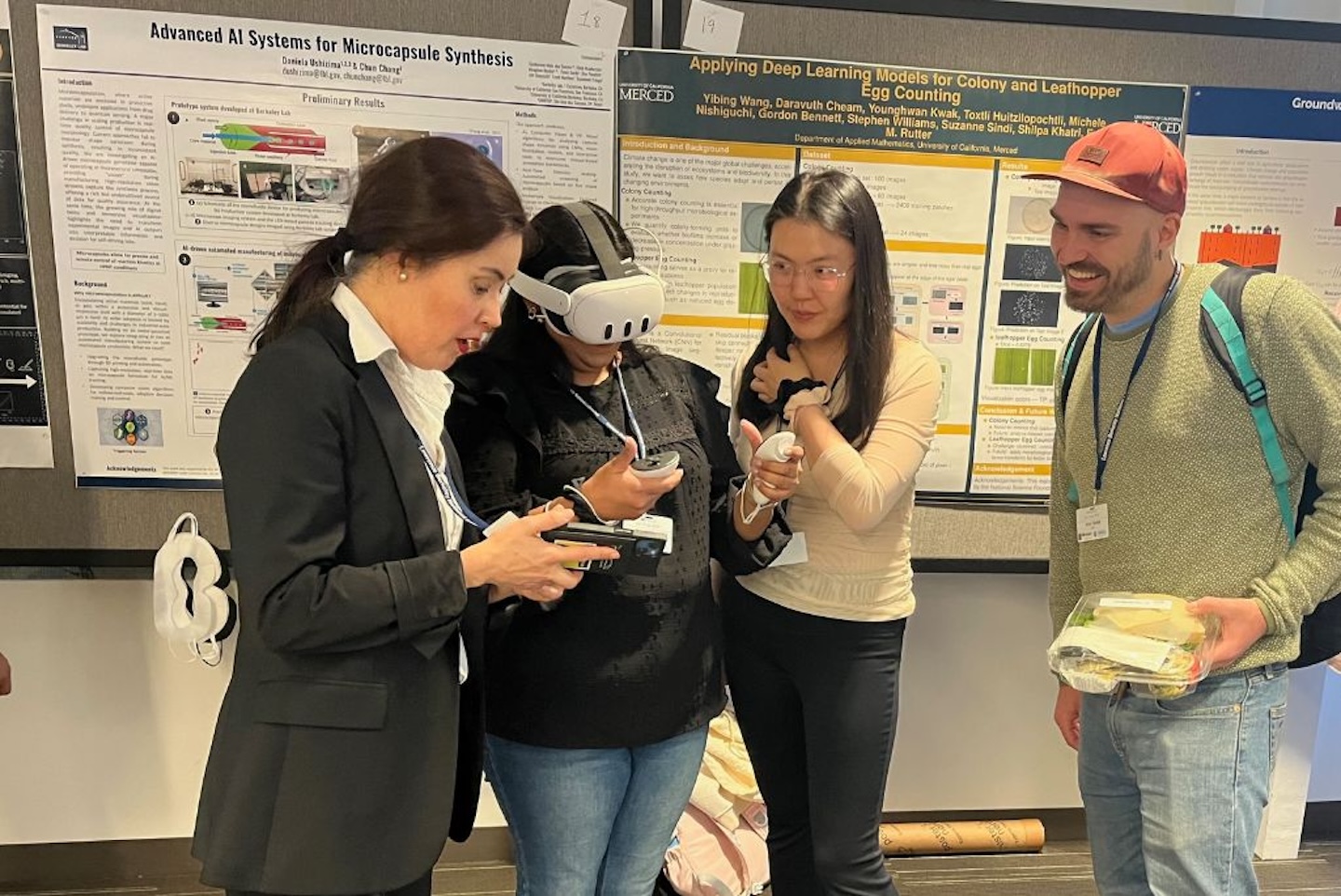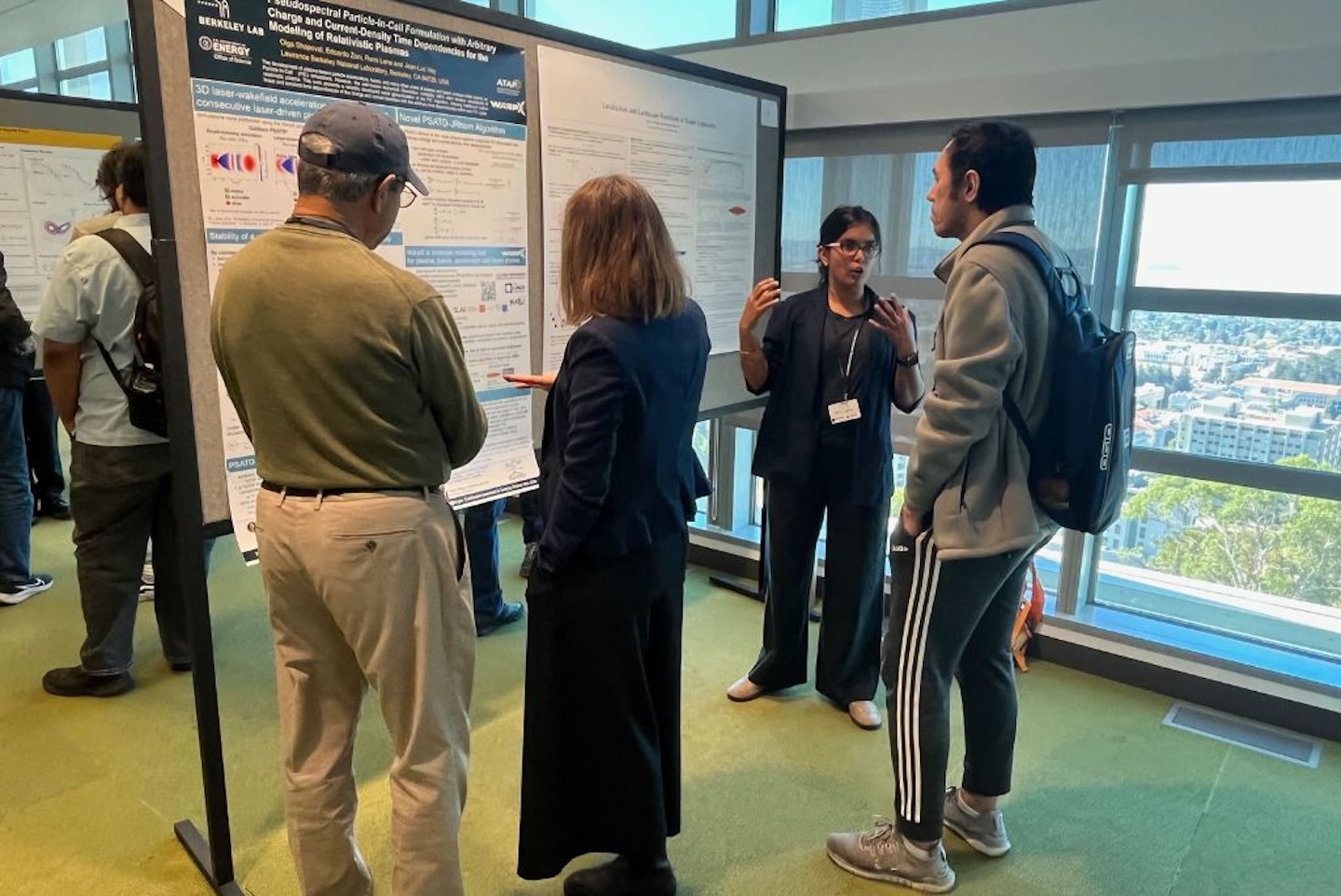Earlier this month, Berkeley Lab welcomed a record 211 participants from 44 institutions—including Amazon, Cerebras, NVIDIA, Siemens, UC campuses, and national laboratories—for the second-ever SIAM Northern and Central California (NCC) Sectional conference. The event showcased the Bay Area’s collaborative energy—especially in emerging fields like artificial intelligence (AI) and precision life sciences. This unprecedented level of engagement from leading technology firms and research universities highlighted the region’s public–private partnerships and demonstrated the vital role applied mathematics plays in advancing science and technology.
“Regional SIAM meetings such as the Northern and Central California Sectional Conference are truly special because they open the door for so many who might not be able to travel for a national event. NCC25 gave participants a chance not only to see the breadth of exciting work happening locally, but also to strengthen personal connections close to home,” said Stefan Wild, Director of Berkeley Lab’s Applied Mathematics and Computational Research (AMCR) Division and co-chair of the conference. “Just as important, we were able to give early-career researchers the space to share their work, find mentorship, and build the networks that can launch their careers. The conference really demonstrated how applied mathematics remains at the heart of innovation, collaboration, and discovery in our region.”

Participants engaged in a packed program of technical talks, interactive panels, and hands-on workshops that reflected the community’s wide-ranging expertise—spanning machine learning, high-performance computing, life sciences, control theory, uncertainty quantification, and numerical methods. Highlights included a panel on the role of AI, machine learning, and large language models in science, as well as presentations from academic researchers, national laboratory scientists, and private sector innovators. Facility tours included a visit to the National Energy Research Scientific Computing Center (NERSC), where participants learned about the center’s role in supporting advanced computational research. Industry leaders—including Siemens, NVIDIA, Amazon, and Cerebras—contributed through panels and presentations, highlighting the diverse real-world impact of applied mathematics.
A focus on career development and mentorship was woven throughout the event. Workshops and interactive panels aimed to help participants—especially early-career researchers—navigate professional pathways both within and beyond academia.

The poster session provided an additional platform for students and postdoctoral researchers to share their work, with five individuals recognized with Best Poster Awards: Alexander Aghili (UCSC) for “TICA-Based Free Energy Matching in Coarse-Grained Machine Learning for Molecular Dynamics,” Irabiel Romero (UC Merced) for “An Optimization-Based Approach for Secure, Safe, and Economic Operations of California Power Grid During Wildfires,” Jonathan Forstater (UC Davis) for “E(3)-Equivariant Fragment-Based Graph Neural Networks for Biomolecules,” Kelli Gutierrez (UC Davis) for “Analyzing Active Forces in Microswimmers,” and Larry Wigington (Naval Postgraduate School) for “Solving Stochastic Linear Programs on GPUs.”
“Several components of the conference were designed to support students and early-career participants, including the poster competition, mentoring workshop, and interviewing and CV workshop. Thanks to dedicated volunteers from academia, industry, and the labs, we encouraged meaningful interactions among multidisciplinary groups. As someone involved in organizing these events, I was impressed by the willingness of senior-level volunteers to help and the enthusiasm of early-career participants, which made it clear that the NCC applied math community is truly welcoming and supportive. I believe this conference helped strengthen our community,” said Erika Ye, an Alvarez Postdoctoral Fellow in Berkeley Lab’s AMCR division.
The conference was organized with the support of several dedicated teams. The Organizing Committee was co-chaired by Andy Nonaka, Sherry Li, and Stefan Wild (Berkeley Lab). The Local Organizing Committee included Berkeley Lab’s Roel Van Beeumen, Aydin Buluc, Hannah Klion, Lin, Lin, Paul Lin, Dmitriy Morozov, and Erika Ye. The Technical Program Committee brought together experts from a range of institutions across the region, including Shima Alizadeh (Amazon), Anthony Austin (Naval Postgraduate School), Harun Bayraktar (NVIDIA), Bert Debusschere (Sandia), Alyson Fox (LLNL), Serkan Hosten (San Francisco State University), Tammy Kolda (MathSci.ai), Dongwook Lee (UC Santa Cruz), Vivek Pallipuram (Pacific), and Andy Wan (UC Merced).
“The NCC25 organizers demonstrated exceptional commitment and professionalism, and the conference far exceeded my expectations. I am sincerely grateful to the organizing committee, Berkeley Lab for hosting, and to all participants for contributing to such a successful event. Every aspect—the program, the venue, and the overall atmosphere—was outstanding. I would also like to acknowledge those who actively promoted the event and helped broaden its reach,” said Noemi Petra, Chair of the Northern and Central California Section of SIAM and Applied Mathematics Professor at UC Merced.
“I was especially impressed by the enthusiasm and engagement of the student participants, whose eagerness to learn, network, and contribute was truly inspiring. This aligns closely with one of the NCC community’s core objectives: to support and mentor students and early-career scientists. Building on the positive feedback and strong student participation this year, I hope that future NCC conferences will involve local SIAM Student Chapters in organizing sessions specifically dedicated to student engagement and professional development,” Petra adds.

About Computing Sciences at Berkeley Lab
High performance computing plays a critical role in scientific discovery. Researchers increasingly rely on advances in computer science, mathematics, computational science, data science, and large-scale computing and networking to increase our understanding of ourselves, our planet, and our universe. Berkeley Lab's Computing Sciences Area researches, develops, and deploys new foundations, tools, and technologies to meet these needs and to advance research across a broad range of scientific disciplines.


